ECB July Rate Decision Preview: Euro Bulls Still Have Short-Term Profit Potential
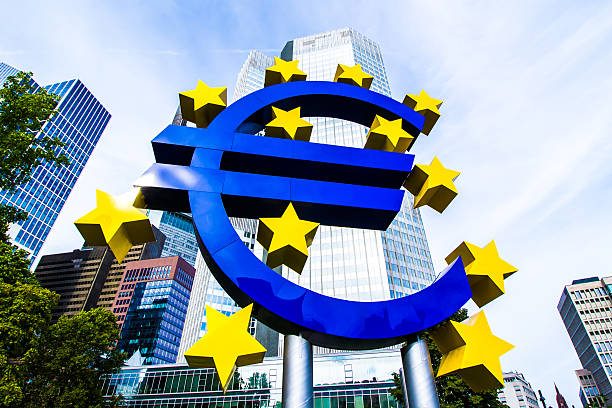
TradingKey - On 24 July 2025, the European Central Bank (ECB) will announce its policy interest rate decision. The prevailing market consensus is that the ECB will maintain its policy rates unchanged, with the deposit facility rate remaining at 2%. We concur with this assessment. The decision to keep rates steady is driven by two key considerations: first, persistent inflationary pressures, with core inflation still exceeding the ECB’s 2% target; second, the Eurozone economy has entered a recovery phase since early 2025, with growth rates significantly surpassing the averages of 2023 and 2024. These factors support the rationale for maintaining policy rates in July.
Looking ahead, the tariff policies proposed by the Trump administration are expected to hinder Eurozone economic growth, potentially reducing reflation risks. Against this backdrop, the ECB is likely to adopt a more accommodative monetary policy stance in the future. Over the next 0-3 months, the global shift away from the US dollar will continue to be a key driver of foreign exchange market dynamics. This trend is likely to weaken the US dollar index, offering temporary support to the euro’s exchange rate. As a result, euro-dollar bullish trades still present profit potential. However, in the medium term (3-12 months), ongoing rate reductions by the European Central Bank are expected to exert downward pressure on the euro’s value.
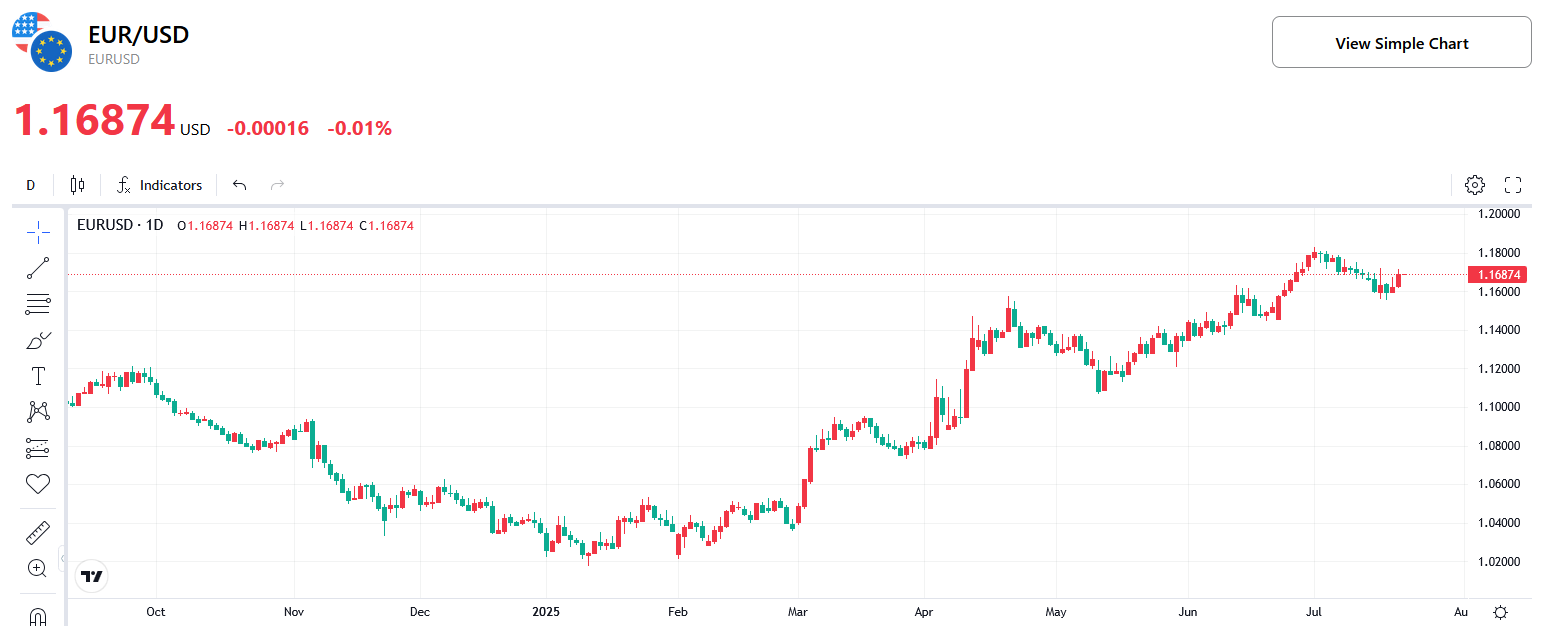
Source: TradingKey
Main Body
On 24 July 2025, the European Central Bank (ECB) will release its policy interest rate decision. The prevailing market view is that the ECB will maintain its policy rates unchanged, with the deposit facility rate staying at 2% (Figure 1). We agree with this expectation.
Figure 1: Consensus Forecasts

Source: Refinitiv, TradingKey
The decision to keep interest rates steady in July is driven by two primary factors, with the first relating to inflation dynamics. Although headline CPI inflation has significantly declined from 2.5% year-on-year in January to 2% in June, disaggregated data reveals divergent trends. The recent slowdown in inflation is largely attributed to falling energy prices, while service prices continue to exhibit strong stickiness. Notably, the core CPI, which the ECB closely monitors, remains elevated at 2.3%, above the ECB’s 2% policy target (Figure 2). Given the persistent nature of headline inflation and the elevated core inflation level, these factors constrain the ECB’s ability to pursue further rate cuts.
The second factor pertains to economic growth. Supported by coordinated monetary and fiscal policies, real GDP growth in the Eurozone reached 0.6% quarter-on-quarter in Q1 2025, markedly surpassing the average growth rates of 2023 and 2024 (Figure 3). Consequently, the ECB faces no immediate pressure to pursue aggressive rate cuts.
Figure 2: Eurozone CPI (%, y-o-y)
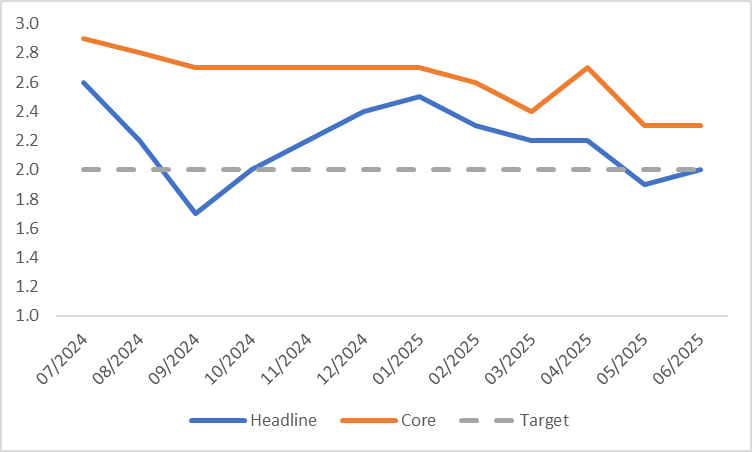
Source: Refinitiv, TradingKey
Figure 3: Eurozone Real GDP (%, q-o-q)
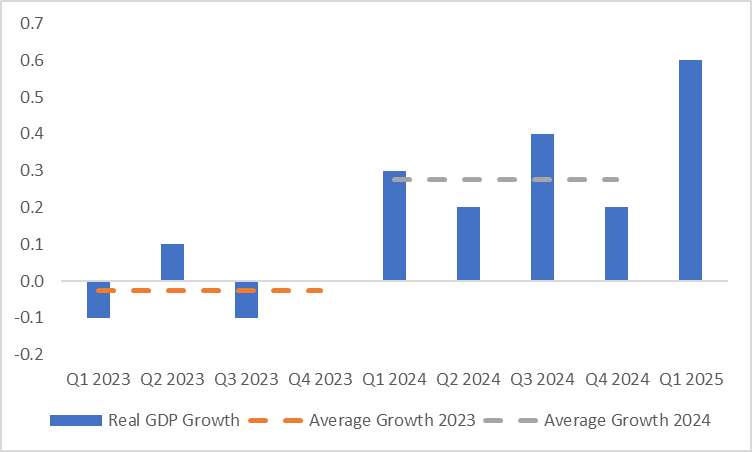
Source: Refinitiv, TradingKey
The European Central Bank (ECB) initiated its rate-cutting cycle in June 2024, reducing policy rates by a cumulative 235 basis points to date (Figure 4). Looking ahead, we anticipate the ECB will resume rate cuts in September, with the Eurozone likely transitioning to a low-interest-rate environment by mid-2026. This expectation is grounded in two key factors: growth and inflation dynamics. On the growth front, U.S. foreign policy poses the most significant risk to the EU economy, exemplified by recent threats from the Trump administration to impose 30% tariffs. Should such measures slow Eurozone and global economic growth, the ECB is highly likely to adopt a more accommodative monetary policy stance. On the inflation front, an economic slowdown could suppress inflationary pressures from the demand side. The ECB’s June projections indicate that inflation will stabilise at 2% in 2025, with an average of 1.6% in 2026. Against this backdrop of declining inflation, the ECB can implement further rate cuts without significant concerns about reflation risks.
Over the next 0-3 months, the global shift away from the US dollar will continue to be a key driver of foreign exchange market dynamics. This trend is likely to weaken the US dollar index, offering temporary support to the euro’s exchange rate. As a result, euro-dollar bullish trades still present profit potential. However, in the medium term (3-12 months), ongoing rate reductions by the European Central Bank are expected to exert downward pressure on the euro’s value.
Figure 4: ECB Policy Rate (%)
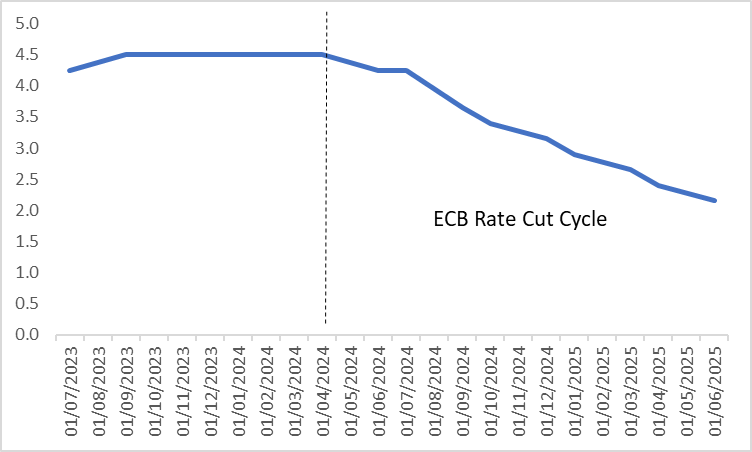
Source: Refinitiv, TradingKey

* The content presented above, whether from a third party or not, is considered as general advice only. This article should not be construed as containing investment advice, investment recommendations, an offer of or solicitation for any transactions in financial instruments.


